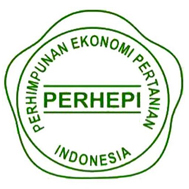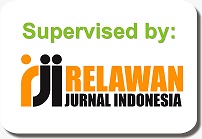Role Of Agricultural Sector In Facing Economic Disparity In The Special Province Of Yogyakarta
Abstract
GRDP (Gross Regional Domestic Product) growth is one indicator of economic growth in a region. This indicator should not only rise but must also be evenly distributed in the surrounding area. This study aims to (1) further investigate the contribution of the agricultural sector in the GRDP in DIY, and (2) determine the role of the agricultural sector in dealing with economic disparity in DIY. This study used secondary data covering several variables from 2010-2018. The analytical tool used was table description analysis, calculated Williamson index, paired t-test, and simple OLS regression. The results of the study reveal that the agricultural sector has a declining contribution to the GRDP in DIY. There is an increase in regional income gaps or economic growth between districts/cities in DIY. The agricultural sector is significantly proven to have an impact on the decline in the Williamson Index, which means that the higher the contribution of the agricultural sector to the district/city GRDP, the economic growth between regions in DIY is more evenly distributed. In other cases, the agricultural sector can reduce economic disparities between districts/cities in DIY.
Keywords
Full Text:
PDF (Bahasa Indonesia)References
Awokuse, T. O., & Xie, R. (2015). Does agriculture really matter for economic growth in developing countries? Canadian Journal of Agricultural Economics, 63(1), 77–99. https://doi.org/10.1111/cjag.12038
BPS. (2019). Yogyakarta Dalam Angka 2019. Badan Pusat Statistik.
Karas, E., & Selen, U. (2018). Refah İktisadı Kapsamında Sosyal Refah ve Vergileme İlişkisi: Türk Gelir Vergisinin Değerlendirilmesi. Business and Economics Research Journal, 9(4), 979–993. https://doi.org/10.20409/berj.2018.150
Lamba, A., Allo, P. K., & Lamba, R. A. (2019). Effect of fiscal decentralization policy of regional economic imbalances towards economy growth in Eastern Indonesia. International Journal of Social Sciences and Humanities, 3(2), 112–127. https://doi.org/10.29332/ijssh.v3n2.298
Loizou, E., Karelakis, C., Galanopoulos, K., & Mattas, K. (2019). The role of agriculture as a development tool for a regional economy. Agricultural Systems, 173, 482–490. https://doi.org/10.1016/j.agsy.2019.04.002
Manago, A. M., Greenfield, P. M., Kim, J. L., & Ward, L. M. (2014). Changing cultural pathways through gender role and sexual development: A theoretical framework. Ethos, 42(2), 198–221. https://doi.org/10.1111/etho.12048
Riduwan, & Sunarto. (2013). Pengantar statistika untuk penelitian pendidikan, sosial, ekonomi, komunikasi, dan bisnis. Bandung: Alfabeta.
Sjafrizal. (2012). Ekonomi Wilayah dan Perkotaan. Jakarta: PT. Rajagrafindo Persada.
Soebagyo, D., Fahmy-Abdullah, M., Sieng, L. W., & Panjawa, J. L. (2019). Income inequality and convergence in Central Java under regional autonomy. International Journal of Economics and Management, 13(1), 203–215.
Vo, D., Nguyen, T., Tran, N., & Vo, A. (2019). What Factors Affect Income Inequality and Economic Growth in Middle-Income Countries? Journal of Risk and Financial Management, 12(1), 40. https://doi.org/10.3390/jrfm12010040
Widada, A. W., Masyhuri, M., & Mulyo, J. H. (2017). Determinant Factors of Food Security in Indonesia. Agro Ekonomi, 28(2), 205. https://doi.org/10.22146/jae.26245
Williamson, J. (2017). The Costs of GDP-Linked Securities. In Growth-Linked Securities (pp. 65–70). https://doi.org/10.1007/978-3-319-68333-1_5
DOI: https://doi.org/10.32528/agribest.v4i1.2966
Refbacks
- There are currently no refbacks.
Copyright (c) 2020 Jurnal Agribest

This work is licensed under a Creative Commons Attribution 4.0 International License.
INDEXING SERVICES
</













